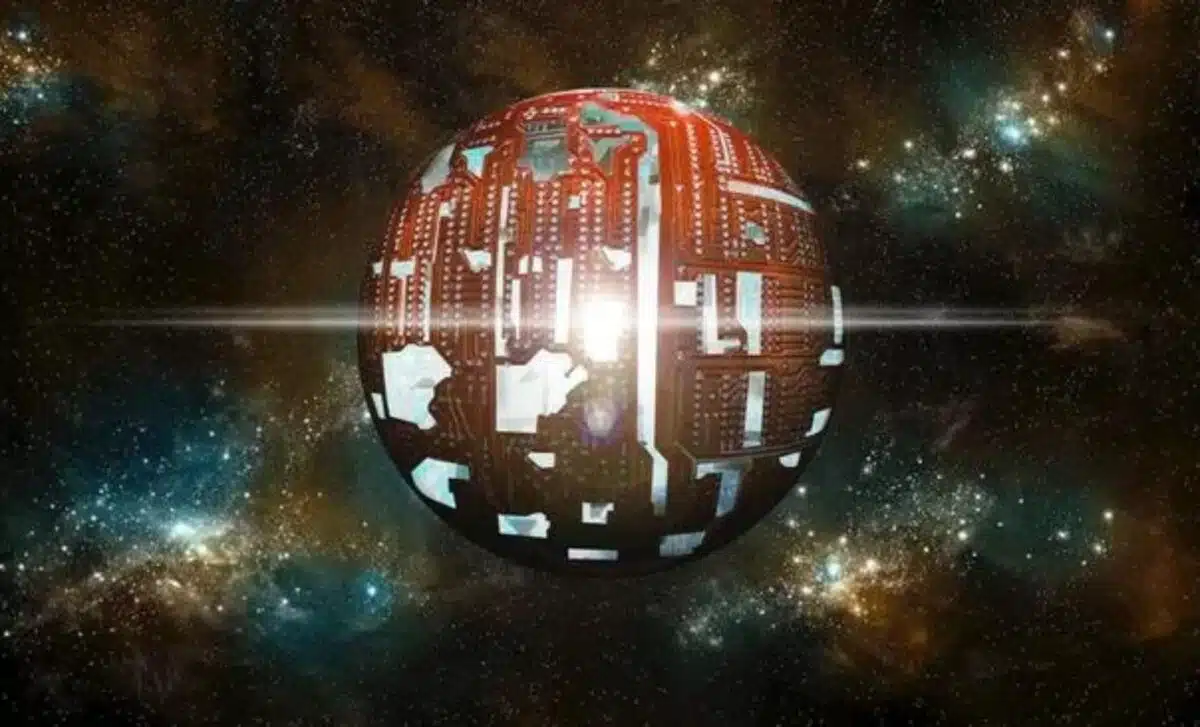
Published on May 17, 2024 07:30 By Lydia Amazouz
Collected at: https://dailygalaxy.com/2024/05/alien-civilizations-discovered-7-stars/
Researchers have allegedly discovered seven stars in our galaxy that exhibit signs of potentially being surrounded by Dyson spheres, advanced structures built by hypothetical alien civilizations to harness the energy of their home stars. This groundbreaking finding has sparked significant interest in the search for extraterrestrial intelligence.
Understanding Dyson Spheres
Dyson spheres, first proposed by physicist Freeman Dyson in 1960, are hypothetically colossal megastructures that could encompass a star, capturing a substantial portion of its energy output. These structures could vary in form, from a complete sphere encasing a star to more fragmented designs like Dyson swarms or ring stations.
The concept is rooted in the idea that an advanced alien civilization would need to harness massive amounts of energy to sustain its technological needs. By building a Dyson sphere, such a civilization could theoretically capture and utilize nearly all the energy produced by their star, significantly boosting their capabilities.
Detection of Infrared Excess Emissions
In the recent study, researchers used data from several space observatories, including the European Space Agency’s Gaia spacecraft, NASA’s Wide-field Infrared Survey Explorer (WISE), and the Two Micron All-Sky Survey (2MASS), to search for signs of Dyson spheres.
They specifically looked for infrared excess emissions (IEEs), a key technosignature indicating the presence of such structures. A Dyson sphere would radiate large amounts of infrared radiation as it converts the star’s energy, making it detectable from Earth. The team developed a specialized computer program to sift through data from over 5 million stars, ultimately identifying seven strong candidates that display the characteristic infrared excess.
Characteristics of the Candidate Stars
The seven stars identified are all M-dwarf stars, smaller and dimmer than our Sun, and located within 1,000 light-years of Earth. M-dwarf stars are known for their long lifespans and stable luminosity, making them favorable candidates for hosting long-term advanced civilizations.
The discovery is particularly intriguing because it narrows down the search for advanced alien civilizations to specific, observable targets. These stars’ consistent infrared excess cannot be easily attributed to known natural sources, suggesting the potential presence of artificial structures.
Potential for Future Observations
While the findings are promising, they are not conclusive. Follow-up observations with more powerful instruments, such as the James Webb Space Telescope, are planned to further investigate these candidates.
The next phase of research will involve taking more accurate readings and searching for additional signs of intelligent life, such as unusual atmospheric compositions or artificial light.
This meticulous approach aims to rule out false positives caused by natural phenomena like dust clouds or debris disks, which can also emit infrared radiation.
Broader Implications in the Search for Alien Civilizations
The identification of these seven stars opens new avenues in the search for extraterrestrial intelligence. It highlights the importance of technosignatures in detecting advanced civilizations and encourages the development of more sophisticated methods for analyzing astronomical data.
This research contributes to a broader understanding of how we might detect and communicate with alien civilizations, should they exist. It also underscores the vast potential for discovering signs of life beyond Earth, challenging our understanding of the universe and our place within it.
As researchers continue to refine their techniques and expand their searches, the possibility of finding evidence of advanced extraterrestrial civilizations becomes increasingly plausible.
The study of Dyson spheres and other megastructures not only excites the imagination but also propels the scientific community to push the boundaries of what we understand about life in the cosmos. This ongoing endeavor, fueled by curiosity and innovation, underscores humanity’s relentless pursuit to comprehend the vastness of the universe and our potential neighbors within it.
By delving into the mysteries of these distant stars and the potential civilizations they may harbor, researchers are charting a significant course towards unraveling the complexities of our cosmic neighborhood and our place within it.

Leave a Reply